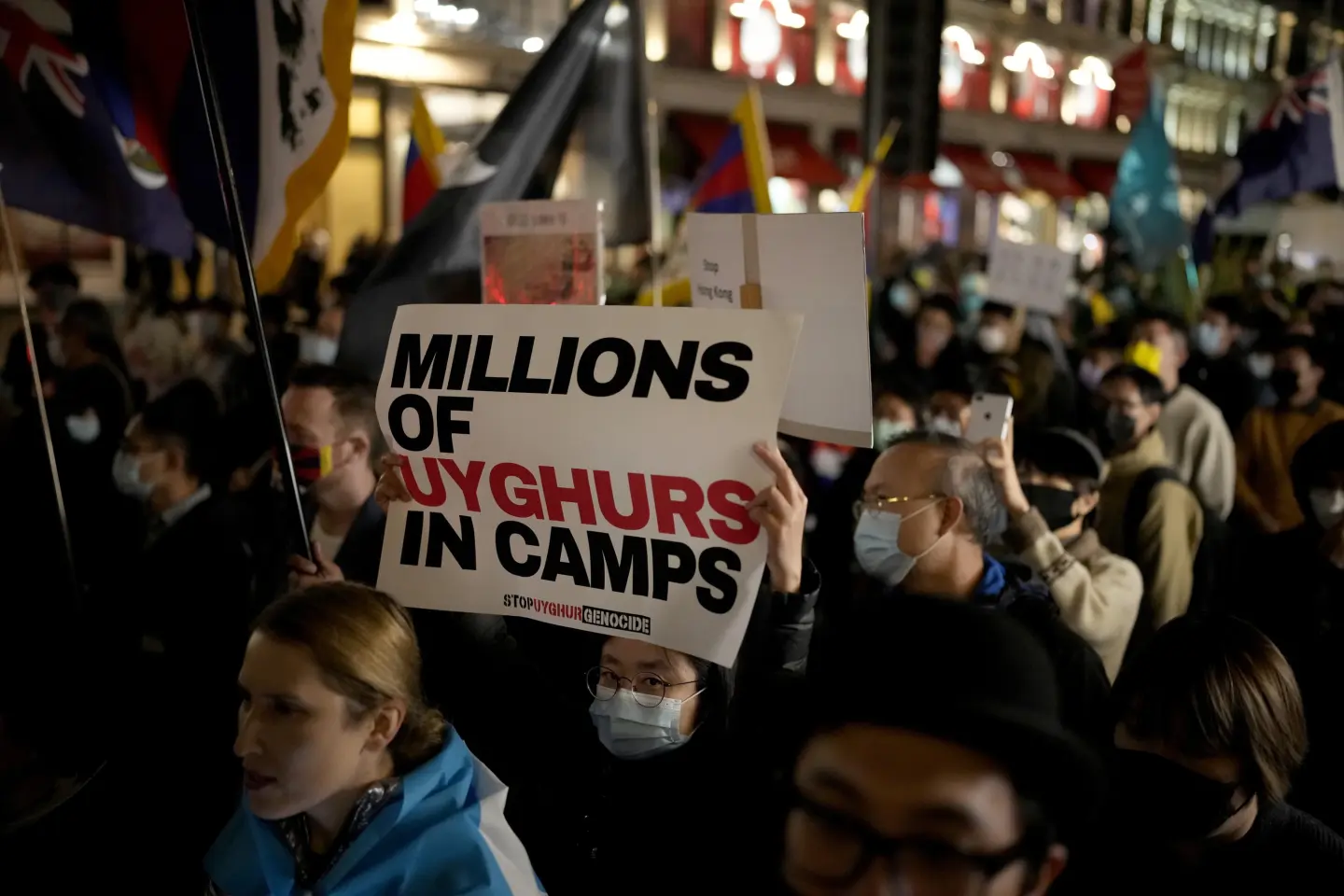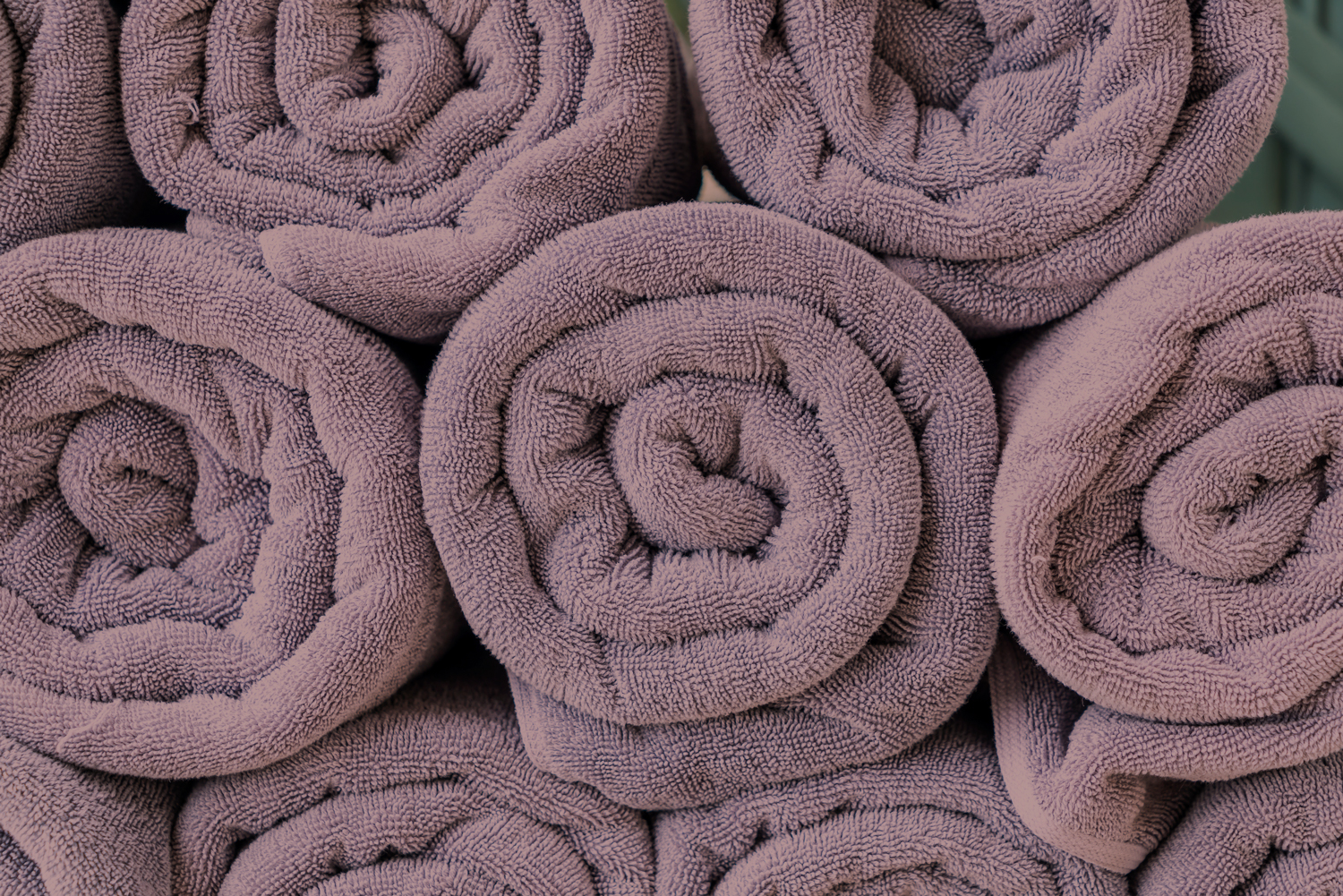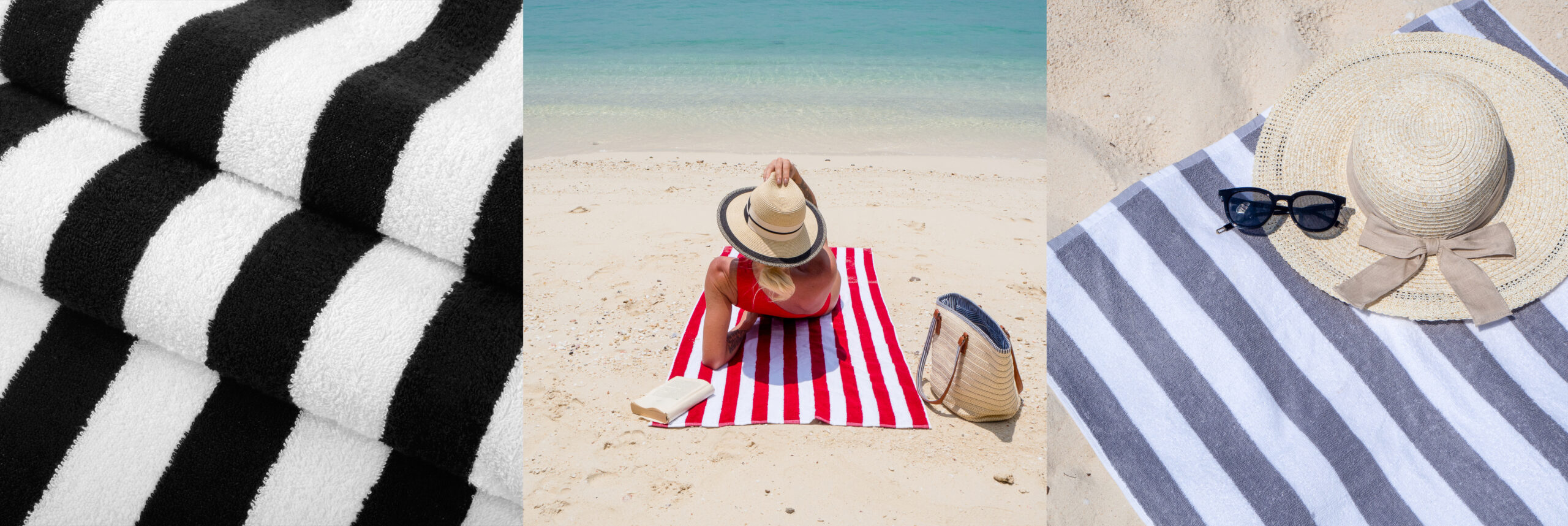Why Are My Bar Mops Grey?
I hear this question in the marketplace and wanted to share the background of the “dingy barmop”. In order to answer this question I think its best to provide a bit of background regarding yarns, their origins and some industry terms. Obviously 100% pure cotton yarns start from cotton balls in a cotton field. The prices of cotton trade on several commodity index floors in various markets globally.
Historically over the last 5 years cotton has traded at between $0.55 per LB and $0.95 per LB. The current price of cotton is approximately $0.80. Once the cotton is procured, it needs to be processed into yarn, woven, bleached, cut into a towel piece, sewn, labeled, baled and shipped from Asia to the US and then distributed.
Total raw costs for all steps (without profit) would be slightly less than $1.00 a LB. So, if using 100% yarn, you should be paying somewhere around the equivalent of $1.80- $2.20 on a per pound basis (e.g. a 28 oz bar mop would be priced at $3.15 per doz to $3.85 per doz) Keep these numbers in mind as we proceed…
Now, as these yarns get woven into a product, there are wastes that are generated in the process. Some yarn waste is generated from the ginning (separating cotton from the seeds and other plant matter) spinning (making the yarn) and weaving (making the textile). Each type of waste has specific value to the waste collector and those values range from $0.00 to $0.35 per LB.
When waste or scrap is collected from the weaving process, typically the yarns being woven are a blend of cotton and polyester. The yarns being used were higher quality yarns typically intended for garments (check your labels on your clothes and most are poly/cotton blended). The yarn is still in its natural state (which is a greige color or looks like a cotton ball shade). During the weaving process little pieces of yarn scrap or leftover lengths of yarn get collected and sold to this aftermarket.
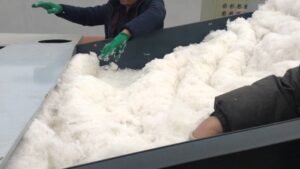
Cotton Waste Recycling
The next step for these waste yarn scrap is to be reprocessed into usable yarn cones again. Now remember that these yarns were bought for waste prices that are dramatically cheaper than the raw cost of cotton. The issue is that they are not consistently cotton and there are various degrees of polyester that are mixed together in these collected waste yarns (think of the equivalent of stew made out of cotton yarn scraps). The waste processor now needs to put this waste yarn through a pulling process to rip the scrap pieces apart back into fibers and then re-spin the yarn into a functional product again.
When this happens the fibers are weakened or shortened to short staple fibers and typically some pure cotton and polyester is added into the “stew” to strengthen the yarn. The final product that is produced is a lower quality yarn that has some degree of polyester and various blends of cotton qualities mixed together.
The process of using recycled yarn scraps to make these towels is a cost saving process to the mill. Typically this is done to me a price point for a product that gets 4-5 turns in a commercial laundry. The mill making the product is focused on using these yarns to afford a competitive price and
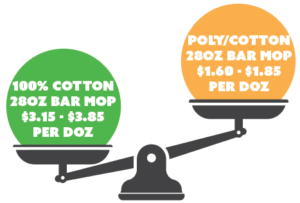 can do this starting with yarns that are selling for less than the actual price of cotton as a raw commodity. When using some form of recycled blended yarns in this fashion you’ll find price points that range from $1.60 to $1.85 on a per LB basis. Back to our example, a 28 oz towel would cost $2.80 to $3.25 (approx.)
can do this starting with yarns that are selling for less than the actual price of cotton as a raw commodity. When using some form of recycled blended yarns in this fashion you’ll find price points that range from $1.60 to $1.85 on a per LB basis. Back to our example, a 28 oz towel would cost $2.80 to $3.25 (approx.)
Here’s the issue. When you bleach cotton from natural form to white it requires a water temperature of about 95 degrees Celsius. Polyester bleaching needs a much higher temperature of about 120-130 degrees. When the mill is looking for price savings, they cannot afford to spend the additional time, energy and equipment cost bleaching recycled yarn on higher temperatures. The towels are bleached AS IF they were 100% cotton but the bleach doesn’t react correctly with the polyester that is blended into the waste yarns. The result is a grey effect. The yarns used on the product just cant react to the bleach correctly and the towel will never look bright white.
So, a commercial laundry, or consumer, needs to make a decision when choosing a bar towel. Do you want the towel to be bright white and pay a higher price or accept a lower shade of whiteness for a cost savings. It comes down to impressions for a customer, what market you’re servicing and the lifespan of the towel in your setting. At the end of the day, those cheap bar mops wont get any brighter when you bleach them but as always, you pay for what you get.



 Author: Hal Kanefsky
Author: Hal Kanefsky

